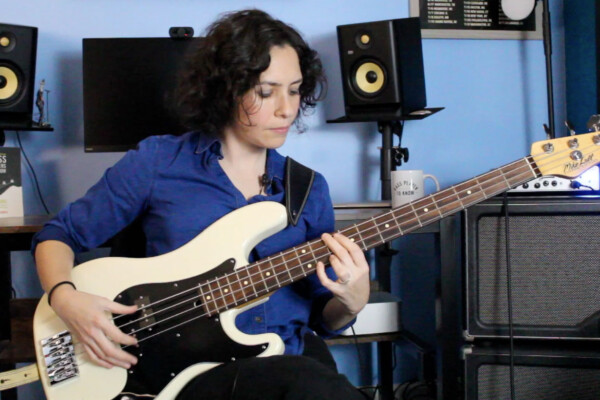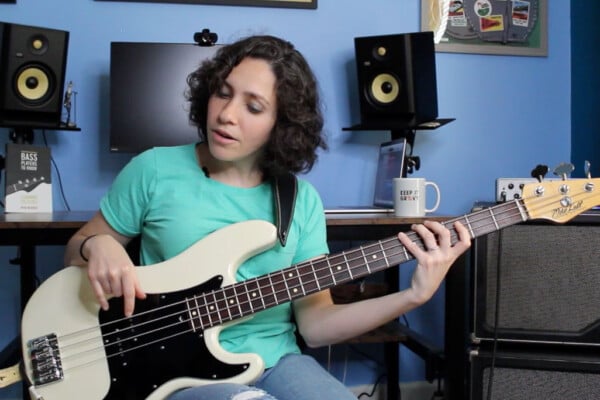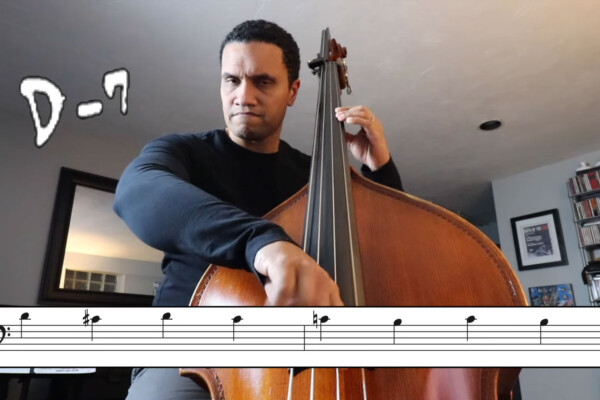Playing Through Chords – Continued
Q: I’ve spent a lot of time developing exercises for myself to practice connecting chords so that I’m not treating each chord as a separate entity. My goal is to voice-lead my way through the chords as if each is a slight variation on the last. I’ve been trying to solo during chord progressions, but I find myself stuck on the same notes/position and not changing with the progressions. What do you recommend?
A: Playing well through, over and around changes is a life-long pursuit. So you’ll likely always feel like you can improve in this area.
To get us started, check out this video I did on a way to practice voice leading through changes in a chordal way here:
That is one way to help open your eyes, ears and mind to how chords actually relate to each other but here are a few more ideas for you.
I often find that the more I restrict myself in my practicing, the more effective the time spent doing it. This means that I really try and stop myself from doing what I already know and at the same time, avoid tackling more than I should focus on at once.
This will help you avoid the big time struggles with new concepts, ideas or material, while also serving to helping you from getting overwhelmed with how much you can’t do (yet).
So, with this in mind, try setting up some guidelines for yourself to outline and enforce how you are going practice.
Here are a few ideas to help you get started:
Try restricting yourself to one small area of the fretboard.
- For example: 2×4 – two strings and four frets. This gives you a small box to work within and will keep you from jumping all over the neck.
- Try soloing for a while in a familiar area of the neck in this manner (say the first four frets or frets 12-15 on the D & G string, for example).
- Once you start to feel good there, up the ante by moving towards the middle of the neck. Do it in all positions so you get comfortable playing the chords from any position and you develop your fretboard knowledge.
Restrict yourself to one octave and one spot on the neck.
- Start with your index finger on the root.
- Now start with your pinky on the root (see the chord from the other side!)
Practice playing a specific melodic or scaler pattern through each chord.
You can also mix things up. Who says that one pattern needs to only apply to each chord!
- If a tune has two chords per bar, play 1,3 or chord #1 and 5,7 of chord #2, for example.
- Or take a scaler pattern. 1,2,3,4 of chord scale #1 and 5,6,7,8 of chord scale number #2
Stick with one tune for an extended period of time.
There’s something that happens once we feel like we’ve hit a wall and don’t know what to play, but keep going anyway and play through that point until you really have the tune in your head and, possibly, re-kindling some inspiration. Stuff tends to come out of you that wouldn’t have otherwise. Whether it’s through frustration, reckless abandon or an allowance to explore and possibly sound bad doing it. Have you ever tried just played “Stella…”, “Autumn Leaves”, “Giant Steps”, “Falling Grace”, “Blue and Green” or whatever your favorite tune in the Real Book is for 30 minutes straight? An hour?
As you can see, there are as many ways to work through changes as you can think of. The real key is sticking to it. Do it every day and you will improve! How quickly you improve is dependent upon how hard and smart you work at it when you’re doing it.
I’m beginning to realize that all of this stuff is what I personally need to start focusing on myself, so your question was timed perfectly!
I’m sure the readers here will have some great advice to add as they usually do.
Readers, what do you recommend for getting into the zone and playing through chords? Tell us about it in the comments.
Have a question for Damian Erskine? Send it to [email protected]. Check out Damian’s instructional books, Right Hand Drive and The Improviser’s Path.




You might want to see your luthier about those “woof” tones your getting around the 12th fret ;).
:D
Doing what you recommend has been one of the single most beneficial parts of my daily practice routine. Here’s what I do in addition to what you have listed above. I’ll sit down to my Yamaha Keyboard and develop a four chord riff. Sometimes more. Some days it might be a jazz riff, funk, etc. Once I have it tight, I record it (along with the drum STYLE) as one of the USER songs. Then I hit play and run through all types of variables throughout making sure my timing is locked on. Doing this actually accomplishes quite a few things and also keeps the interest level peaked. I’ve got a few notebooks already filled with these changes and the lines I developed for them. It’s a real solid reference for jamming, studio work, etc.